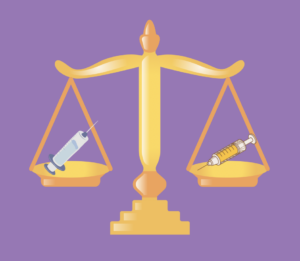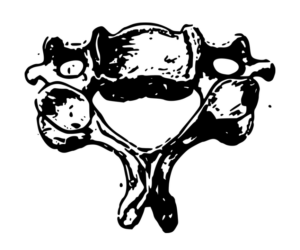by Clayton Kazan, MD
We all know about the various codes they call in the hospital: Code Blue, Code White, Code Pink, etc. We have even made up a few codes of our own, aka Code Brown. But, not enough of us know about Code Green. It\’s not a new name for patients on 4/20 or from Colorado or California. It\’s about recognizing the leading cause of active duty death in our First Responders…suicide.

I have come to believe strongly that we train ourselves and our EMS brothers and sisters the wrong way. When I look back on my training as an EMT (and Medical School and Residency), I received exactly zero training in mental resilience and zero preparation for the calamities I would bear witness to. In fact, my department followed a now discouraged practice of forcing us to see a psychologist for a debriefing after any traumatic call. Hopefully none of your departments still require critical incident stress debriefing since we now know that forcing it upon our folks can be counter-productive. But, what can we do, because we need to do something…the data is staggering.
According to the Firefighter Behavioral Health Alliance (FBHA), from 2014-2016, there have been 374 suicides among active duty firefighters, compared with 268 Line of Duty Deaths (LODDs). This data likely understates the problem, since data for suicides is shared voluntarily while LODDs are reported mandatorily to NIOSH. Research has shown that first responders\’ rate of suicidal ideation is 10x that of the general public, while firefighters\’ rate is more than 12x. The risk of suicide attempts is 13x higher for first responders and 30x higher for firefighters. The risk of successful suicide is more than 2.5x that of the general public. And, unfortunately, the data is not much better for us Medical Directors because Emergency Physicians also have an increased risk of suicide, though not as bad as the first responders.
I think that the problem boils down to 2 cultural issues we need to face. First, we need to reconsider the whole way we think about the horrible things we experience. We all carry with us the memories of the horrific tragedies we have cared for, the mistakes we have made, the times we have been threatened or assaulted, and we have all experienced having to suppress our emotions for the sake of moving on to the next patient. We see things and experience emotions, quite often, that the lay public never experiences. No matter how resilient you may be, these exposures leaveboth temporary and permanent impressions upon your soul.
What do we do to prepare our folks during their training, and how good are we at monitoring our crews throughout their careers? The military, faced with a suicide epidemic, has incorporated resiliency training to soldiers preparing for deployments, and they have seen some decrease in post-traumatic stress disorder (PTSD). While EMS has embraced many military technologies and practices into everyday care, resiliency training has lagged behind. There are many healthy ways we use to cope every day, including the tight comeradery among us. Many of our departments, mine included, have incorporated Peer Health Counsellors, Chaplains, and access to Psychologists, but it is still largely dependent on self-referral. Unfortunately, beyond the comeradery of our profession, the culture also includes some worrisome practices. Substance abuse is high, especially with the work hard-play hard mentality. The same comeradery that binds us can lead folks that need help to be afraid to ask for it because they are afraid of being ostracized, thought of as weak, of being laughed at, or of being fired. And so, they laugh at our jokes and sit quietly during our stories, and they begin to isolate themselves. After all, they signed up for this, and working in EMS becomes more than your profession. It becomes who you are, and what if you don\’t know if you can continue to be who you are anymore?
The other cultural problem that we need to face is the way we treat errors. This is not unique to EMS and is true throughout the practice of medicine. I think that we all tire of the analogies to the airline industry, but the success of their cultural change around safety has been remarkable. In my own department, if we avoid serious mistakes 99.99% of the time, then we will still commit 36/year…a number that most critics would argue is far too high. But, can anyone really expect even that level of performance from human beings? We need to get out of the cycle of our name, blame, and train approach to performance improvement. No system punishes its way to greatness. In fact, only a poorly designed system would ever allow a single, unchecked mistake by a provider to lead to a patient catastrophe. Our culture of punishing for mistakes only leads to their concealment for fear of reprisal, and so our system remains stagnant rather than getting safer. We set such unrealistically high expectations for our folks, that the guilt of a mistake reaps a terrible toll on our folks, and they practice in fear. In the words of Jeff Skiles, the lesser known co-pilot of the USAir plane that landed in the Hudson River, “It is vastly more important to identify the hazards and threats to safety than to identify and punish an individual for a mistake.”
So, what are the answers? We need to educate ourselves and our folks about the warning signs of our brothers and sisters in crisis. We have to educate them early in their careers and renew it often, and we need to maintain a culture that encourages members in crisis to step forward. We must build layers into our systems to protect both our patients and our caregivers, because no individual error should ever lead to catastrophe. That way, the crews on the front lines can step forward and help us build a safer system rather than practicing in fear of making a catastrophic mistake. Lastly, let\’s mobilize behind the critical work of organizations like the Code Green Campaign, FireStrong, etc. and make sure that our folks all know that they are out there.
We must all remember that we are all vulnerable to mental illness. The burden of our deceased brethren was not unique to them. Sometimes it just takes one bad experience to put us over the edge. It happens to folks in the beginning, middle, and end of their careers, and it can progress rapidly. There are often warning signs, and there may be an opportunity to intervene and get them the help they need. What sets them apart is not their circumstance, it\’s that we did not recognize their crisis and respond to them in time. Suicidal ideation is a treatable illness, and suicide is preventable.
Please check out these excellent and important organizations:
Code Green Campaign
Firestrong




